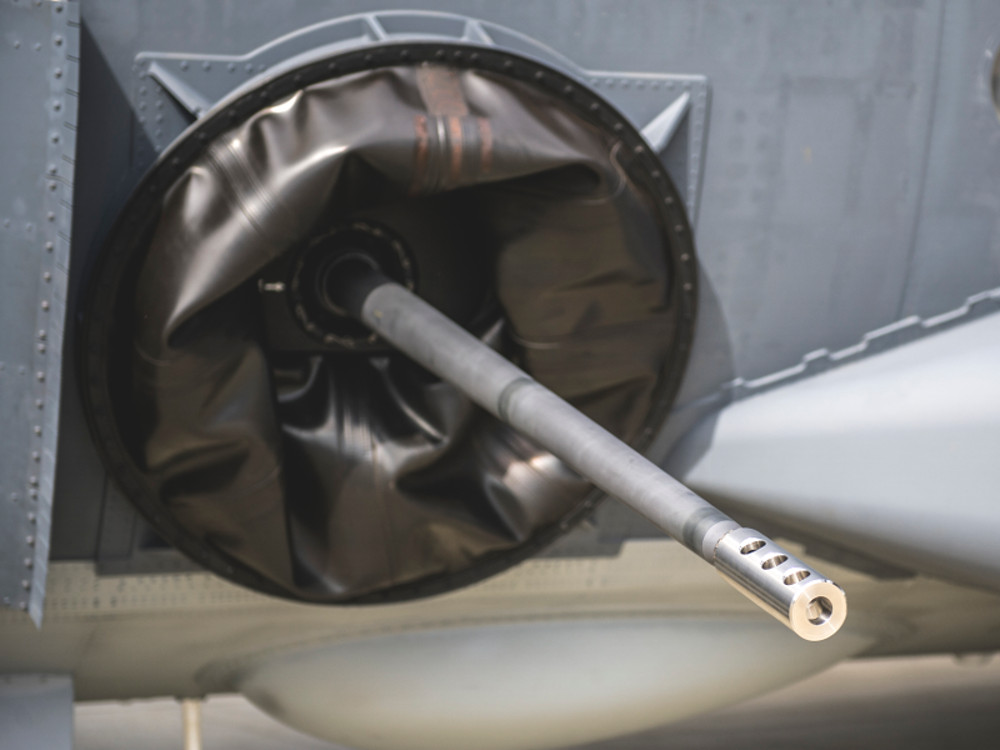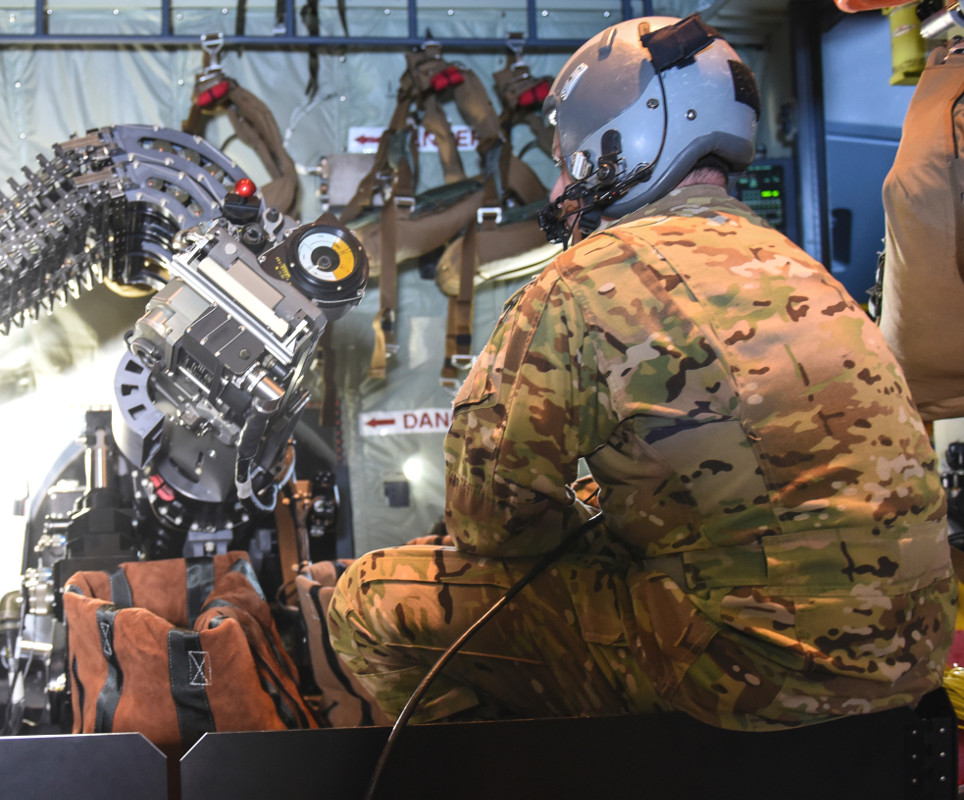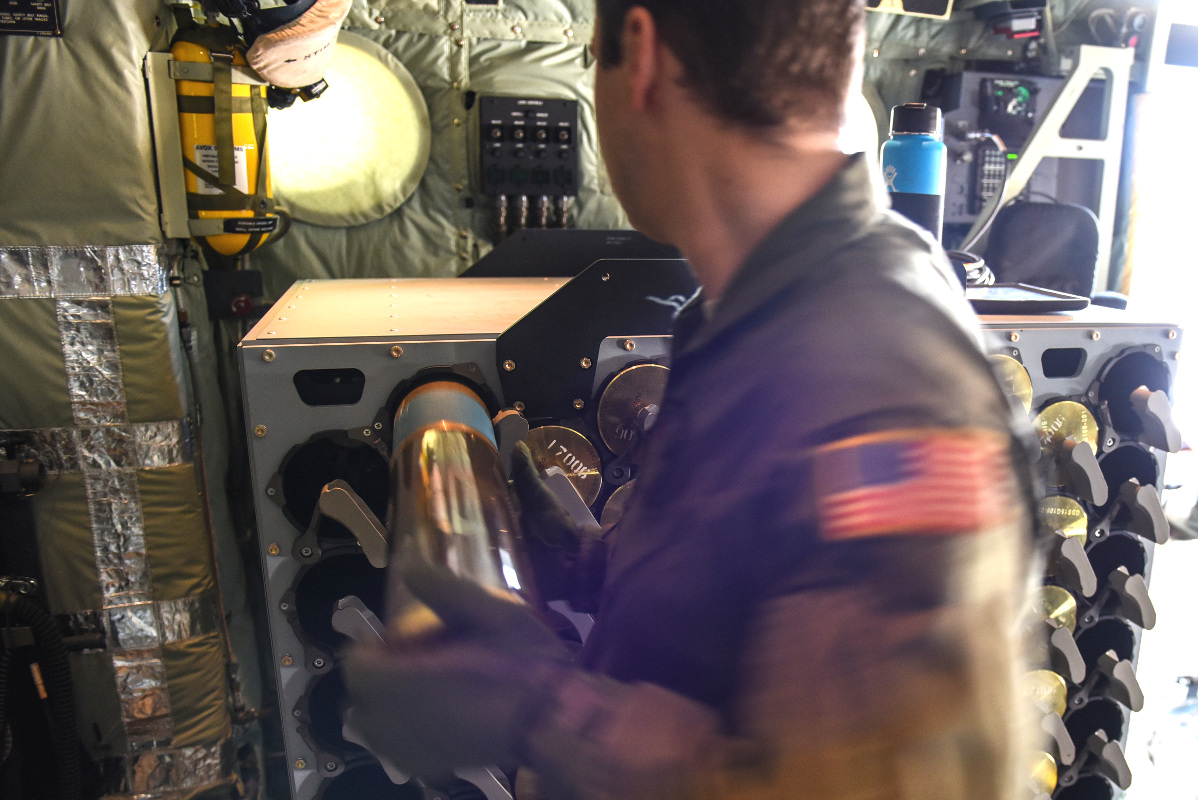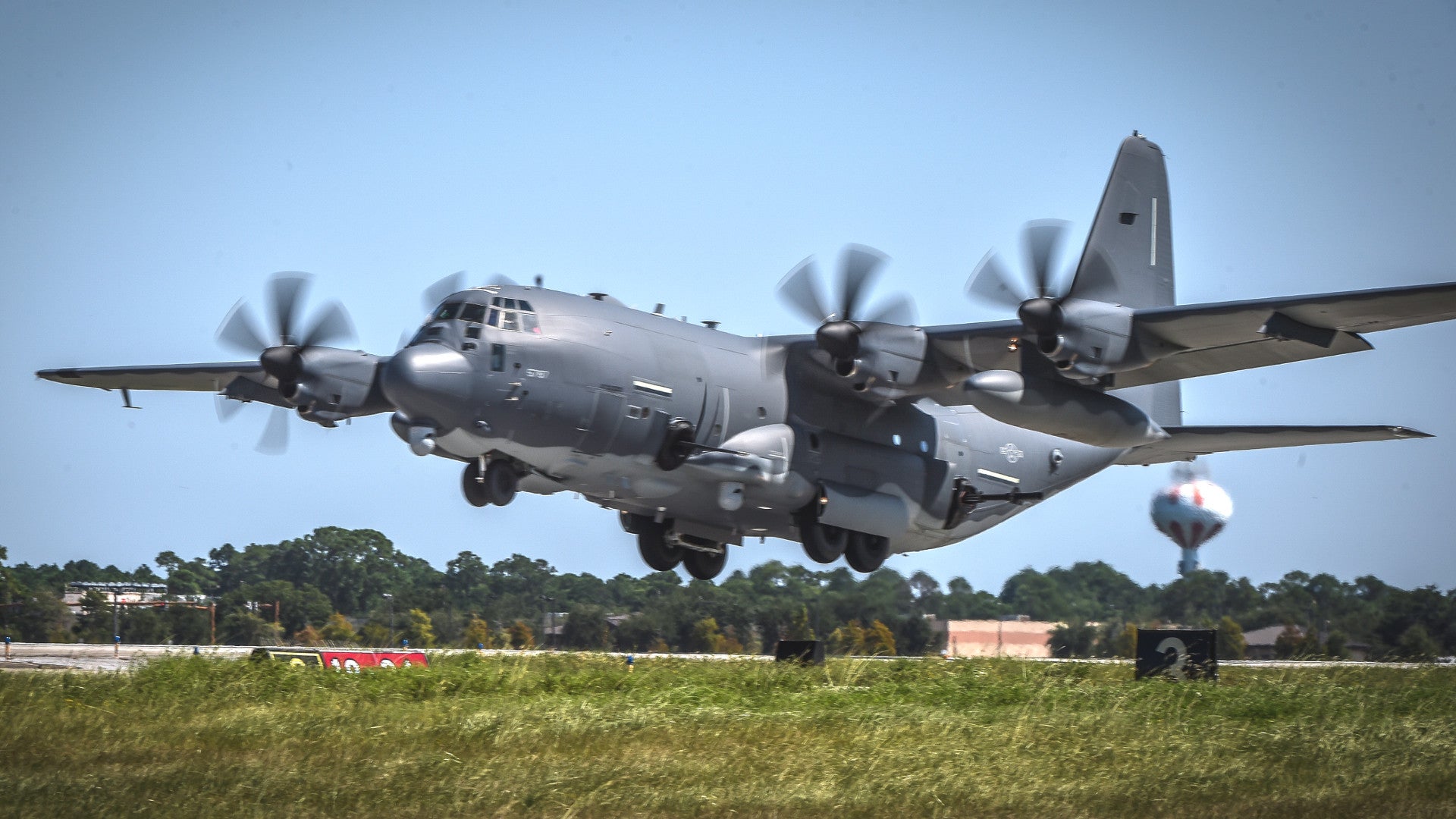The U.S. Air Force says the first of its newest AC-130J Ghostrider gunships are ready for combat, just as soon as they can train enough crews to fly them. A new report from Pentagon’s top testing office says that while that assessment might be technically true, the aircraft’s 30mm and 105mm guns continue to suffer from poor accuracy, unreliable ammunition, and other significant issues.
Earlier in January 2018, the Pentagon’s Office of the Director of Operational Test and Evaluation, which oversees that work across the services, released its latest report, covering various testing activities during the 2017 fiscal year. This routine review touches on the progress of dozens of different weapons programs, including the AC-130J, highlighting both successes and failures.
“Although analysis is ongoing, preliminary data from the IOT&E [initial operational test and evaluation] indicate that the Block 20 AC-130J will support most elements of the Close Air Support and Air Interdiction missions,” the section of the report on the Ghostrider notes up front. “But some shortfalls remain.”
One of these is, glaring giving the aircraft’s role as a gunship, is that the fire control systems associated with the plane’s 30mm GAU-23/A cannon from Orbital ATK. The weapon system still has trouble compensating for changes in altitude and how the AC-130J is oriented toward the target as it flies in one of its typical pylon turn attack runs.

The gun and its mount are supposed to automatically adjust to those shifts in position to make sure the rounds fall on the right target. Tests during the fiscal year 2017 showed that the gun ended up out of alignment more than once and needed a calibration update in flight.
The problem then became that when the gunners tried recalibrate the cannon itself, they often threw off the positioning of its mounting hardware. It would be a more time consuming process to recenter the weapon in its mount and then recalibrate the system as a single unit.
On top of that, the GAU-23/A vibrates so violently at its maximum rate of fire – 200 rounds per minute – that it regularly becomes so inaccurate that it triggers a built in safety mechanism. The failsafe stops the cannon from shooting before the gun automatically recenters itself. After this process is complete, the gunner has to press the trigger again to start firing again.
Both of these are serious problems, especially for the Air Force’s various types of AC-130s have developed an excellent reputation for being precision tools ideal for “danger close” missions where enemy forces are close to friendly troops, innocent bystanders, or both. A loss of calibration or severe vibrations could send shells flying wildly off the mark, potentially leading to friendly fire or civilian casualties.

According to the Director of Operational Test and Evaluation’s report, the safety measures in place have prevented any potentially dangerous episodes in testing. Those safety measures, however, do halt the shooting right in the middle of firing runs, which could be differently problematic in an actual combat scenario.
So, if nothing else, these issues could reduce confidence in the effectiveness of the gun as a whole, leading to a reticence to employ it when it might actually be the best option. The AC-130J’s other weapons are a 105mm howitzer, AGM-176 Griffin laser- and GPS-guided missiles, and GBU-39/B Small Diameter Bombs. In the future, the Air Force plans to integrate the multi-mode GBU-53/B Small Diameter Bomb II and AGM-114 Hellfire missile onto the aircraft. The service also wants to add a directed energy weapon to the gunships in the near future.
All of these are highly precise weapons and the Air Force has long billed precision guided munitions as the primary armament of its newer gunships, leading to the observation that it would be increasingly more accurate to call them bomb trucks. Still, the 30mm cannon is specifically supposed to provide a weapon with an even more limited blast radius and larger volume of fire for situations that might call for it, such as particularly tricky danger close attack runs.
Existing AC-130W Stinger II gunships have the exact same weapon and the older AC-130U Spooky models have a 25mm Gatling cannon and a single barrel 40mm cannon to fill this gap. The GAU-23/A is supposed to offer an in-production option with better range than the older 25mm weapon and firepower similar to the 40mm gun. The latter weapon is a World War II-era design that is becoming increasingly difficult for the Air Force to maintain.

This plan and the cannon’s accuracy problems aren’t new, though. In 2007, the Air Force test fitted the same weapons to a number of U model aircraft and determined that they were insufficiently precise.
And as noted, the W variants use virtually the same gun arrangement as the J model, too, but don’t have the same vibration issue. On those aircraft, the crew can recalibrate the cannon independently of the mount, as well, a feature that apparently got lost in porting the system over to the Ghostrider. The Air Force itself seems befuddled by the inconsistencies.
These aren’t the only gun related problems with the AC-130Js, either. The 30mm cannons use a special type of ammunition, the PGU-46/B, which has specific features that make it inherently more accurate and less likely to malfunction, which we at The War Zone have previously reported on in detail.
Unfortunately, the Director of Operational Test and Evaluation says subsequent tests show that these rounds perform poorly against targets on soft surfaces, punching through wood floors and exploding below or burying themselves in the ground before exploding, which absorbs much of the explosive energy and shrapnel. One experiment in particular showed manikins took less damage if they were positioned on top of a target building with a plywood roof than those on top of a concrete test structure.
The video below is a montage of Orbital ATK’s different chain guns, including the Mk 44 Bushmaster II, from which the company derived the GAU-23/A.

The Ghostrider’s 105mm cannon, a relative latecomer to the J model’s arsenal that the Air Force initially had no intention of adding in, reportedly works just fine, as does its ammunition. “The 105 mm round demonstrated expected lethality against personnel, trucks, and light armored vehicles,” the Director of Operational Test and Evaluation’s report states matter-of-factly.
But there is an odd and potentially worrisome problem with the rack that holds the large howitzer shells. Though larger artillery pieces often use separated ammunition, where the projectile and propellant aren’t physically joined together, 105mm weapons in the U.S. military use self-contained cartridges that have the same basic design as the rounds for rifles and machine guns.
For an unknown reason, unlike the ammunition storage on the AC-130U, the system on the J model doesn’t keep the shells snugly in place. During flight, the normal movements of the aircraft and typical vibrations apparently have a tendency to shake the 105mm projectiles loose from their brass casings.

If the explosion of the propellant gasses isn’t fully contained inside the case, the shell could end up flying slower than expected or with otherwise different ballistic characteristics, potentially throwing the gunner’s aim off and sending it off course. As with the 30mm cannon problems, this in turn could reduce the crew’s confidence in the weapon and reduce its willingness to employ it in actual combat for fear of making a serious mistake.
Now, to be fair, we don’t know if the Air Force has resolved these issues since September 2017, which is the end of the fiscal year and the end of the reporting period for the Director of Operational Test and Evaluation’s review. That being said, it’s also the same month that the service declared the AC-130J had reached initial operational capability.
“This is a fully configured gunship,” Lieutenant General Marshall “Brad” Webb, the head of Air Force Special Operations Command, told DoDBuzz at the time. Though the aircraft might be fully configured, it now appears that not all the pieces are functioning as intended.
The issue might even turn out to be moot. Webb also said that the Ghostriders were still likely years away from any actual deployments because he simply did not have enough personnel to meet his operational demands and have crews training on a new aircraft type at the same time.

“We’re still just shy of two years away from wanting to put those in combat,” he explained. “The challenge that we have, it’s my problem, is how do we fight the current fight — we have gunships deployed to Afghanistan, Iraq, Syria — and use those same people to convert into a new weapon system?”
As of July 2017, the Air Force had received nine AC-130Js from manufacturer Lockheed Martin. The service totaled a tenth aircraft during testing when it briefly flew out of control, went inverted, and over-stressed the airframe. The plan is to ultimately buy a fleet of 37 Ghostriders, which will fill the gap left by the retirement of the AC-130H Specter in 2016 and completely replace the remaining AC-130Us.
If the Air Force can’t fix the issues with the AC-130J’s guns in the next two years or so, when they are set to make their first deployments, the aircraft might effectively revert back to being more of a bomb truck.
Contact the author: joe@thedrive.com
